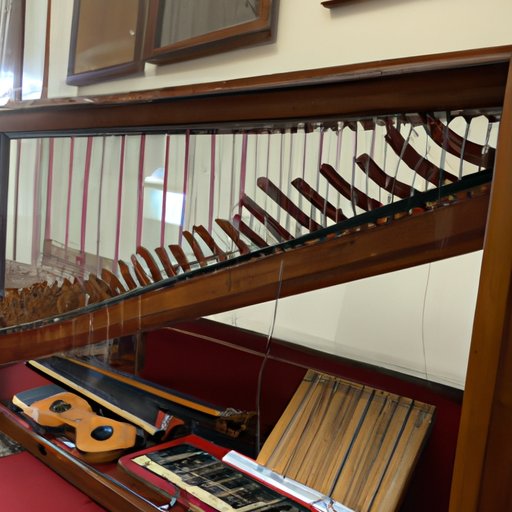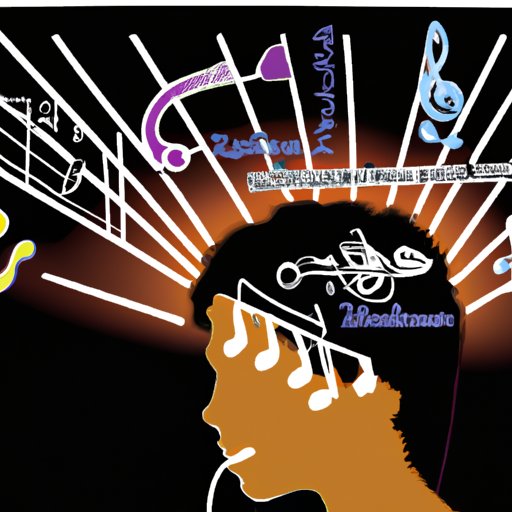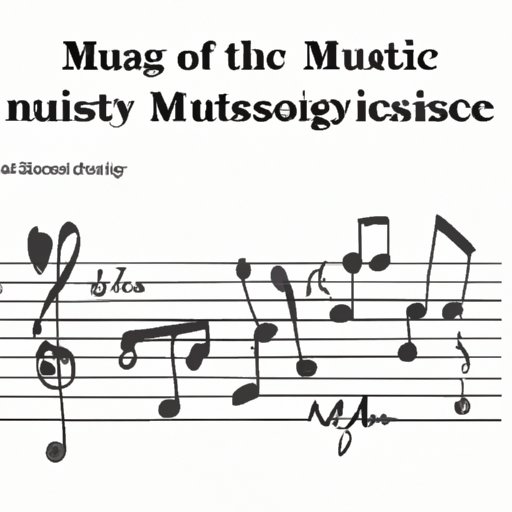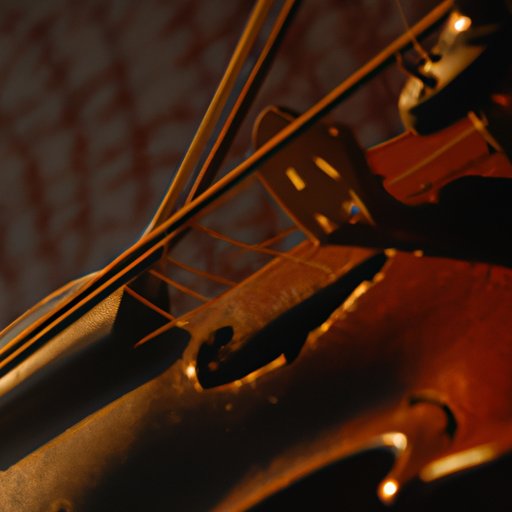Introduction
Art music is a broad term used to describe a range of musical styles that are typically composed for performance by trained musicians. It encompasses a wide variety of genres, from classical symphonies to contemporary jazz, and it has been a part of human cultures since antiquity. This article will provide an in-depth exploration of art music, examining its historical development, genres, instruments, and impact on society.

Historical Overview of Art Music
The history of art music is complex and varied, with many different influences and styles. To better understand this history, it is helpful to break it down into individual eras:
Ancient Origins
The earliest known examples of art music date back to ancient Greece, where it was used in theatrical performances and religious ceremonies. Ancient Greek music was largely monophonic, meaning it consisted of a single melodic line without accompaniment. This style of music was also prevalent in other ancient civilizations such as Egypt and India.
Medieval and Renaissance Periods
During the Medieval period (roughly 500-1400 CE), art music began to develop in Europe. This era saw the emergence of polyphonic music, which added multiple melodic lines to create a fuller sound. This new style of music was further developed during the Renaissance period (roughly 1400-1600 CE), when composers began to experiment with different forms and textures. During this time, vocal music became increasingly popular, with composers writing intricate madrigals and motets.
Baroque, Classical, and Romantic Eras
The Baroque period (roughly 1600-1750 CE) is often referred to as the “golden age” of art music. This era saw the emergence of the concerto grosso form, as well as the rise of the opera. The Classical period (roughly 1750-1820 CE) saw the emergence of the sonata and symphony, while the Romantic period (roughly 1820-1900 CE) saw the emergence of the concerto, nocturne, prelude, and lieder. During this era, composers began to explore more expressive and emotive elements in their music.
20th Century and Beyond
The 20th century saw the emergence of a wide range of new styles and genres, from atonal music to minimalism. This era also saw the emergence of modern jazz, which combined elements of classical music with improvisation. In the 21st century, composers have continued to push the boundaries of art music, creating new sounds and experimenting with technology.

Exploring the Different Genres of Art Music
Art music encompasses a wide variety of genres, each with its own unique characteristics. Some of the most common genres include:
Opera
Opera is a type of musical theater in which singers use their voices to tell a story. Operas are usually composed in arias and recitatives, and can be performed in either a traditional or modern style. Opera is one of the oldest forms of art music, dating back to the 16th century.
Symphonies
A symphony is a large-scale work for orchestra, usually consisting of several movements. Symphonies can range from traditional works to more contemporary pieces, and they often contain complex harmonies and melodies.
Chamber Music
Chamber music is a type of art music written for a small ensemble of instruments. It is typically performed in a chamber setting, such as a living room or small hall, and is often more intimate than larger orchestral works.
Jazz
Jazz is a genre of art music that combines elements of African American folk music with European classical music. Jazz is characterized by improvisation, syncopated rhythms, and blues scales, and it has had a major influence on popular music.
Contemporary Art Music
Contemporary art music refers to music composed in the 20th and 21st centuries. This genre includes works by composers such as John Cage, Steve Reich, and Philip Glass, and it often incorporates elements of other genres, such as rock, pop, and world music.
Examining the Role of Art Music in Popular Culture
In recent years, art music has become increasingly influential in popular culture. Many films and television shows feature art music in their scores, and musical theater continues to be a popular form of entertainment. Let’s take a closer look at some of the ways art music has impacted popular culture.
Film Scores
Many films feature classical or contemporary art music in their scores. This music can be used to add emotional depth to a scene, or to create a sense of tension or excitement. Film scores are often composed by renowned classical composers, such as John Williams or Hans Zimmer.
Television Themes
Television themes often feature classical or contemporary art music. These themes help to establish a show’s atmosphere, and can be used to evoke a certain emotion or set a particular tone. Popular television themes include the theme to The Simpsons and the theme to Game of Thrones.
Musical Theater
Musical theater is a type of stage production that combines singing, dancing, and acting. It often features music from the classical repertoire, as well as contemporary art music. Musical theater has seen a resurgence in popularity in recent years, with shows such as Hamilton and Dear Evan Hansen becoming cultural phenomena.
An Introduction to the Instruments Used in Art Music
Art music is typically performed by trained musicians using a variety of instruments. The most common instruments used in art music are:
Piano
The piano is one of the most popular instruments used in art music. It has a wide range of dynamics and can produce both melodic and harmonic sounds. It is often used as an accompanying instrument, but can also be used as a solo instrument.
Strings
String instruments are used in almost all types of art music. They include the violin, viola, cello, and double bass, as well as the electric guitar and electric bass. String instruments are capable of producing a wide range of tones, from delicate melodies to powerful riffs.
Woodwinds
Woodwind instruments are used in many styles of art music, including classical and jazz. They include the flute, oboe, clarinet, bassoon, and saxophone. Woodwind instruments are capable of producing a wide range of tones, from soft and mellow to bright and piercing.
Brass
Brass instruments are used in many styles of art music, including classical and jazz. They include the trumpet, trombone, French horn, and tuba. Brass instruments are capable of producing a wide range of tones, from mellow and lyrical to loud and brash.
Percussion
Percussion instruments are used in many styles of art music, including classical and jazz. They include drums, cymbals, xylophones, marimbas, and timpani. Percussion instruments are capable of producing a wide range of tones, from soft and subtle to loud and powerful.
Investigating the Notion of Beauty in Art Music
The notion of beauty in art music is subjective, but there are certain qualities that can be said to make a piece of music beautiful. These qualities include harmony, melody, texture, and structure. Let’s take a closer look at how these elements can create a sense of awe and wonder.
Analyzing How Music Can Create a Sense of Awe and Wonder
Music can evoke powerful emotions in its listeners, from joy to sorrow. It can also create a sense of awe and wonder, as listeners marvel at the complexity and beauty of a piece of music. This feeling is often caused by the combination of harmony, melody, texture, and structure in a piece of music.
Examining How Different Composers Interpret Beauty
Different composers interpret beauty in different ways. Some focus on creating lush harmonies, while others focus on intricate melodic lines. Some focus on creating a sense of tension, while others focus on creating a sense of resolution. No matter how a composer interprets beauty, the result can be a powerful and moving experience for the listener.

Analyzing the Impact of Art Music on Society
Art music has had a profound impact on society over the centuries. Let’s take a closer look at some of the ways it has shaped our world.
Effects on Education
The study of art music has long been an important part of education in many countries. It has been shown to improve cognitive abilities, such as memory and concentration, as well as providing students with an appreciation for culture and creativity. Furthermore, studying art music can help to increase empathy and understanding of other cultures.
Influence on Social Movements
Throughout history, art music has been used to express political and social views. For example, the protest songs of the 1960s helped to fuel the civil rights movement, while the punk and hip-hop scenes of the 1970s and 1980s were used to express frustration with the status quo. Art music has the power to bring people together and to inspire change.
Impact on Emotions
Art music has the power to evoke powerful emotions in its listeners. It can be used to express joy, sorrow, anger, and even love. Listening to art music can be a therapeutic experience, as it can help us to process and understand our emotions.
Conclusion
In conclusion, art music is a complex and varied genre that has had a profound impact on society. From its ancient origins to its influence on popular culture, art music has shaped the way we listen to and experience music. With its vast array of genres, instruments, and notions of beauty, art music is sure to continue to captivate and inspire listeners for generations to come.
(Note: Is this article not meeting your expectations? Do you have knowledge or insights to share? Unlock new opportunities and expand your reach by joining our authors team. Click Registration to join us and share your expertise with our readers.)
